-
Posts
4,734 -
Joined
-
Last visited
-
Days Won
118
Content Type
Profiles
Forums
Resource Library
Events
Gallery
Blogs
Store
Community Map
Posts posted by Mayner
-
-
-
[video=youtube;aU4hd9en-Zg]
A westbound 2 engine photo charter freight over most of the line from Antonio to Cumbres Summit. Freight cars are cut in between the two locos to spread the load over trestles. The pipe gondolas and idler cars are typical of traffic in the late 50s 60s when the railroad carried in materials to construct pipelines from the local oil fields
-
Fire train following Eastbound!
Windy Point from HW 17 Crossing
It gets a bit more challenging to maintain a max 4% grade on the final approach to Cumbres Pass the highway and railroad loop around approx. 180° between the final grade crossing and Windy Point (best described as the rim of a Mexicans sombrero) and the summit
[video=youtube;w-D00hywkBY]
Inspection and water stop at Cumbres Pass
During the final years of freight operation the east bound load out of Chama to Cumbres was limited to approx. 20 cars with large 2-8-2 road locomotive and pusher. 1st day was spent working train in 3 or 4 sections to the summit where cars were combined into a 60-70 and worked eastwards singleheaded to Antonio and Alamosa on the 2nd day.
-
Nice model. Your a fast worker.
Looks just right pulling those wagons.

Need to be careful in the Golden Years of the GNR Mac Arnold had a tale of a German POW becoming mighty upset when he saw a dainty looking JT passing Tanderagee on a goods train. The POW a railway man expected something with 6 or 8 coupled wheels.
The combination of plasticard overlays with the nylon 3d body seems to be a good idea. Kieran did you use Mekpak or superglue to stick the overlays to the body?
-
At 64 miles the Cumbres & Toltec on the border between Colorado & New Mexico is the longest heritage railway in the United States. New Mexico & Colorado purchased the line and most of the locos and stock when the Rio Grande shut down narrow gauge freight operation in 1969.
The railway basically climbs at 4% (1:25) for approximately 10 miles from Chama to Cumbres Pass (10,022ft), before descending on an easier gradient to Antonio
"Mudhen" K27 463 descending Cumbres with the 1st Westbound train on 2016 (May 28)
463 approaching Chama
The K27s were the first of the Rio Grande narrow gauge 2-8-2s most were withdrawn or converted to switch engines following the introduction of the larger K36 & K37 Class 2-8-2 in the 1930s
The Cumbres & Toltec coaches were built in house on converted standard gauge freight car underframes as the majority of the Rio Grande car fleet was in use on the Silverton line.
K36 489 waiting to depart Chama for Cumbres and Antonio May 30th
Chama has retained most of its original infrastructure including depot & freight house, loco shed and coal stage, freight yard, oil and livestock stock loading facilities. The Friends of the Cumbres and Toltec have restored a representive selection of freight stock including repatriating oil tank cars exported to the White Pass & Ukon when the oil traffic ceased in the 1960s
489 climbing the 4% to Cumbres
-
Silverton looks like the set for a Western though modern cars and SUVs destroy the illusion.
The economy appears to revolve around feeding and entertaining the passengers off the Silverton Train which runs in two sections in summer.
We went for a stage coach ride around town and had some old time pictures taken, for some reason I ended up looking like a railroad baron posing with his family.
The railroad offers the option of train or coach one way for visitors who don't want to spend 6 hours on the train.
GE 80ton ? diesel switching at Durango
The Durango & Silverton is a well polished operation pretty much one mans vision of a steam passenger railway, further east the Cumbres & Toltec is a horse of an entirely different colour
-
John,
Thank you for posting your Holiday Photographs - I'm thoroughly enjoying them.
I was fortunate enough to travel on the locomotive of the first through NIR Train from Belfast to Dun Laoghaire. Somewhere, there should be a photograph of mine recording that trip. I distinctly remember upon our arrival at Connolly Station there being a discussion between the NIR crew and CIE as to whom was to take this train forward to Dun Laoghaire. It was a CIE driver, Inspector and I, who made that trip. After our arrival at Dun Laoghaire, Mallin Station, we went forward Light Engine too the crossover south of the station. When signalled, we crossed to the UP road to run-around our train and rejoin it on the Down road. We were held on the Down road until a southbound DART overtook us by the simple expedient of it using the UP road to continue its journey to Bray. I have often wondered how many passengers boarded the wrong train that day and wondered why they were sped back to Connolly instead of stations south of Dun Laoghaire?
Not sure when you return to New Zealand, have a safe journey,
David.
Hi David
We arrived home safe and sound in Hamilton on Sunday evening after a hectic week travelling by automobile, train, planes, and automobile, now have t get used to driving on the right hand side of the road again

-
Denver & Rio Grande Western found that they had a money spinner they did not quite know what to do with when tourists discovered the Silverton Train in the late 1940s. The Rio Grande eventually sold the line to Charles Bradshaw Jr a business man who vowed that the Silverton would never go diesel, who invested heavily in improving the line and restoring/improving locos and rolling stock. The railroad is now owned and operated by American Heritage Railways as Mr Bradshaw felt it was the only company he could trust with the railway.
D&SRR K36 482 awaiting to leave on the 08:45 to Silverton
The K36s were built by Baldwin in the late 20s roughly equal in terms of pulling power to the GSR 800 class allowed heavier freight trains to be hauled than the smaller 2-8-2 & 2-8-0 locos then in use on the DRGWR narrow gauge lines.
The box car (generator van) coupled immediately behind the loco adds a nice touch to the twice weekly mixed train that operated in the 40s & 50s.
Staff dressed to look the part, with brakemen awaiting the conductors call.
482 on the famous "High Line" above Los Animas Canyon
The railroad basically runs alongside the Los Animas river except a section of the canyon which was too narrow and twisting to provide a footing for a railroad. The loco is leaving a horseshoe curve where it was claimed the engineer and rear end brake man could shake hands across the canyon.
482 "blowing down" from a trestle in the canyon
A practice to remove impurities from a locomotive boiler, usually carried out on a high embankment or bridge in a remote place to avoid scalding anyone/scaring livestock.
Disintegrating stock cars
Non-essential freight stock does not appear to have received much maintenance since DRGWR days, seasoned timber and ironwork stands up well in a low humidity climate. Volunteer input on the DSRR appears to bee mainly limited to the theatrical aspect of railway operation train guides and people in period western costume.
-
The window arrangement is odd and I'd bet the two sets of double windows evenly spaced from the ends are in double doors with a few additional single windows maybe also in doors. I guessing maybe a full brake/parcels or TPO? This would have been on the Dublin-London mail route I presume?
Dun Laoire was basically a hub for mail traffic from London & the Midlands to the United States, Southern & Western Ireland, with mail trains running through to Cobh and Galway with connecting services from the Cork and Galway main lines to other provincial centres.
Through passenger trains ceased to run between Dunlaoire Cork and Galway when the connection to Carlisle Pier was disconnected in connection with the DART electrification works in the early 80s. NIR later extended some of the Enterprise services through to Dun Laoire to connect with the "Mail Boat" but could not compete with the frequent low cost air services between the UK and Northern Ireland
-
 Traces of the mines, depot and trestles have disappeared from the Ophir area though sections of trackbed are in use as forestry access roads.
Traces of the mines, depot and trestles have disappeared from the Ophir area though sections of trackbed are in use as forestry access roads. http://www.ridgwayrailroadmuseum.org/photos.html
The once remote Trout Lake water tank appears to have been one of the signature photo spots on the RGS.
Trout Lake Water Tower
We ran into a thunder storm between the water tank and the trestle but unfortunately no ghostly apparition of a Galloping Goose or a hard working steam loco on a stock or ore train.
Trout Lake Trestle
Luckily the snow was not heavy though we missed out on a photo of the mountains at Lizard Head pass, our next stop was at the replica depot and RGS Motor Car #5 at Dolores (pop 925)
Dolores Depot & Galloping Goose #5
Dolores was once an important depot on the RGS the terminus for trains operating on the northern section of the railroad to Ridgeway, the depot was demolished and yards transformed into US Highway 145
The replica depot and demonstration track was constructed by a local historical society in the early 1990s and the Goose restored in 1998 and has since operated on the Durango & Silverton & Cumbres and Toltec railroads.
Goose 5 represents the final evolution of its type, rebuilt with a war surplus GMC engine & Wayne bus body and the van section converted for tourist operation after the railroad lost the mail contract.
Durango "In Durango, In Durango The Spaniards did fandango, In Durango, Where the sun goes down at Noon" D&SRR train waiting to leave town before noon May 27/16
The RGS used the DRGWR depot, yard and roundhouse at Durnago. Durango always was and still is a railroad town although Durango & Silverton tourist trains run northwards to Silverton, the main line eastwards over Cumbres to Alamosa (the last steam operated main line in the USA)and the branch to Farmington NM closed in the late 1960s
The passenger depot and yard give the impression of big time railroading although the freight yards at the east end of town have disappeared under road development
-
In some ways the highlight of the trip the journey from Montrose to Durango with a side trip to Cortez & Mesa Verde took in the remains of the Rio Grande Southern in south west Colorado.
The RGS which connected with the DRGWR at Ridgeway (True Grit) and Durango abandoned in the early 1950s served a rugged and remote part of South West Colorado using mainly cast off DRGWR equipment, & like the Donegal pioneered the use of internal combustion railcars for passenger and mail traffic. Its said that the 162 mile RGS was built because of the impossibility of completing a direct line over the mountains between Silverton & Ridgeway.
Despite its early closure a surprising of RGS artifacts survive to this day.
RGS 2-8-0 #74 at Colorado Railroad Museum
The largest of the RGS 2-8-0s ex-Colorado & Southern #74 purchased by the RGS from a Denver scrap dealer in 1948!
Replica Ford inspection railcar Ridgeway
Replica RGS Motor 31 Ridgeway Railway Museum
The community at Ridgeway (pop 924) have established a railway museum which includes a short demonstration track for RGS1, full size and models of freight and passenger rolling stock, the museum and tourist information centre is operated 100% by volunteers, restoration and models to a very high standard.
View of San Juan Mountains from Dallas Divide
The Divide was the 1st major summit crossed by the RGS out of Ridgeway the Silverton terminus of the DRGWR is on the opposite side of the mountains.
Although the day started out clear snow started falling as we dropped down to the San Miguel River and cleared off as we approached the former mining town now fashionable ski resort of Telluride (To hell you ride).
Telluride Depot
Possibly sole surviving standard RGS house style depot with freight shed. The depot may have been re-sited closer to the river, to make way for apartments and units.
Bridal Veil Fall at head of canyon
Telluride is in a box canyon, the line extended a mile or so to Pandoro Mill where silver and metal ores were brought down by arial tramways and later roads from the top of the canyon, a bit steep and windy for a hired car.
Back on the road again, snow at Trout Lake May 26 16
The RGS was most famous for its long and high trestles on the climb out of the San Miguel river valley around the Ophir Loop to Lizard Head Pass. The majority of the high trestles had collapsed and Ophir disappeared under road improvements but the folks at Ridgeway said that trestle and water tower at Trout Lake were still standing
-
Try CPS http://cspmodels.com/abante/index.php?rt=product/category&path=65 or High Level Kits http://www.highlevelkits.co.uk/they may be able to supply a suitable funnel for the Guinness Loco.
-
After the Georgetown Loop a drive across the South Park to see the remains of the Colorado & Southern narrow gauge lines(Denver South Park and Pacific) on to Montrose & San Juan Country to ride the Durango & Silverton & Cumbres & Toltec lines before returning to Denver.
Georgetown Shay & GE diesel at Silver Plume depot & museum closed to public on day.
C&S mogul on display Beckenridge (LGB Mogul!)
This loco was restored to service for one season on the Georgetown Loop, but withdrawn & put on public display as a result of mechanical problems
Como Depot & Hotel
One time hub of the South Park system, more or less became a ghost town when the system finally closed in the late 1930s.
Como roundhouse and township The roundhouse was designated a "National Historic Monument" meaning the owner is expected to preserve the building at their own expense.
Trestle original DRGWR main line Black Canyon
Newly re-painted DRGWR 278 C16 2-8-0 at Cinnamon National Parks Service depot
278 was placed on display on the trestle at Cinnamon when the original DRGWR narrow gauge main line through Black Canyon closed in the late 1940s. I am not sure if the National Park Service plan to re-mount the loco on the trestle or display the loco at Cinnamon.
The original 3' gauge Denver and Rio Grande main line followed a round about route from Denver to Grand Junction via Pueblo and Montrose where it linked up with the Rio Grande Western. The main line was shortened in two stages and standard gauged bye passing Montrose and later Pueblo to form todays Union Pacific main line from Denver through the Moffat Tunnel and Glenwood Springs to Salt lake City
-
Starting out from Denver on Monday basically a whistle stop tour of Colorado narrow gauge lines & museums starting with the Colorado Railroad Museum in Golden and working westwards.
Colorado Railroad Museum Rio Grande Southern railmotor Galloping Goose #2 7
Like the County Donegal the RGS turned to i.c. railcars to cut operating costs in the 1930s.
The majority of the railmotors have survived, replicas have been built of scrapped Geese.
Replica RGS railmotor #1 at Ridgeway Colorado
Prototype for the Bachmann On30 & Large scale models.
RGS Goose #2 and Denver Leadville & Gunnison (Union Pacific) 2-8-0 191
The DLGR started life as the Denver South Park and Pacific, never made it to the Pacific and was beaten in its race with the Rio Grande to reach the mining boom town of Leadville and the Utah border.
GE 50T diesel on the Georgetown Loop Railroad
The Georgetown Loop Railroad is a re-construction of a section of line closed and dismantled in the late 1930s featuring the Devils Gate Bridge where the line looped back on itself through 180° to gain height. The railroad was restored by a local historical society, the US Navy assistance in re-building the high bridge.
The GE 50T would have made a mighty useful loco on the Donegal if it survived into the 60s
-
Final photos in ND on Friday before heading west to Colorado
CP 5038 on rail train Fairmount
Rail threading machine
Wide vision caboose on rail train
Late evening RRVWR local completing switching
RRVWR local leaving town
Local ha added a cut of open hopper cars from the elevator track to its train in addition to empty grain and loaded flour hoppers from the mill.
-
Friday Way Freights very few through freights around today watched a CP & RRVWR way freights on the SOO Line.

East bound CP way freight on the Main Line awaiting departure from Hankinson
Through freights appear to set out and pick up at the small yard in Hankinson with a local serving local industries and yards.
Making up the train was time consuming as each move involved blocking a grade crossing.

Westbound RRVWR way freight between Oswald and Hankinson

Eastbound CP way freight takes the Rosholt line at Veblen Junction
This move caught me by surprise I had expected to see the two trains crossing at Oswald was delayed by roadworks and did not realise that an Eastbound could run direct to the Rosholt line without reversing. The Rosholt line serves a large elevator complex and an ethanol plant hence the mixture of hopper and tank cars.

The return trip from Rosholt approaching ND HW 11
These Eco series locos appear to have replaced ex Milwaukee bandit GP 38-2 & CP SD40-2 on the local trains.

RRVWR GP20-C 4400 preparing to switch Fairmount flour mill
The loco consist has uncoupled from their train in order to make a pick up of empty grain and laden flour cars from the mill while the switch crew confer. There is a change in plan a cut of open hopper cars from the Fairmount Elevator track is added to the train before switching the mill.
-
DMVWR 7505 & 7510 picked up 105 grain cars off the CP Hankinson interchange Mon morning. The CP had split the train into approximately 4 sections to avoid blocking grade crossings. The locos arrived light from Oakes, the crew re-combined the train completed the brake test and were away in about 15 minutes.
The ex-SOO line to Oakes and the ND State capital has more of a roller coaster gradient profile compared to the main line from ST Paul to the Canadian border at Portal the 7000hp of a pair of SD45s comes in useful.
7505 & 7507 West of Hankinson
Geneseo Junction
Geneseo is the Junction for a former BN branch to Aberdeen South Dakota that sees occasional use by DMVWR
Although the line to Oakes and Bismark is operated as a short line by the DMVWR Canadian Pacific retain ownership of the track and roadbed
The SOO Line & Great Northern once operated approx 40 miles of parallel trackage between Aberdeen Line MI & Geneseo ND. The RRVWR enjoys running rights over the Canadian Pacific as a result of a 1950s agreement allowing the GNR to abandon its line between the two places.
Look no FRED!
Just a red flag no flashing end of train telemetry device or FRED.
Rather than following the train to Oakes, I headed across the border into South Dakota to check out the Sunflour Railroad a shortline that operated a portion of a CP branch line the Fairmount & Veblen. I had stumbled across the Sunflouer in 2004 when the line appeared to have ceased regular operation, although there was a rumour that the owner would fly up specially from Texas to fire up and drive the lines SW1 to move traffic for a customer.
New Effington Oil tank cars at a grain elevator?
The Sunflours main business appears to be storing out of service oil tank cars as a result of the cut back in US oil production.
Victor SD 2016 good use for hopper cars that keep derailing
The elevators/storage hoppers have become more decrepit, the SW1 no longer stored in the open surrounded by sunflours. The railroad have constructed a workshop and added some spur tracks to for mow equipment clear of the running line and siding south of the elevator complex.
Do it yourself elevator
-
Interesting find Mr Bracken.
Frank was an old friend and talented modeller who modelled the GWR/WR in EM and was deeply involved in the MRSI Loughrea layout. I helped Frank as a roadie moving, setting up an operating Frank's Wentworth and Louhrea at various exhibitions. I wonder did Frank take the actual photos although he modelled the GWR/WR he sometimes spoke of building an Irish layout.
-
The DMVWR SD45s have their original 20 cylinder power units with their distinctive singing sound, the DMVWR locos were a must as I had missed seeing the MRL locos in 2004.
A bit more short line variety with the Otter Tail Railroad at Fergus Falls Minesota which serves a number of grain elevators and a coal fired power station using 4 axle EMD power.
OTVR 1483 ex NKP GP9 introduced 1959 at Fergus Falls
OTVR4016 ex NW GP40
The Otter Tail Valley is owned and operated by Gensesee and Wyoming that owns operates freight railways in Australia, North America and Europe including Freightliner in the UK.
OTVR Yard Fergus Falls
Fergus Falls would make an interesting switching layout with two small yards and a number of rail served industries including grain elevators and feed mills. Fergus Falls was once served by the Great Northern and Northern Pacific and although both lines were closed to through traffic, most of the rail infrastructure in the city is intact including two depots and yards and rail served industries including grain elevators and feed mills.
RRVWR 2194 GP38-2 tied up at Beckenridge MI
The RRVW has an interesting loco fleet including some Caterpillar powered GP20-C rebuilds of CBQRR GP20 locos that included parts from traded in FT units dating from the early 1940s.
-
I am surprised you were allowed to get so close to the action knowing how the US is with litigation but keep them coming and enjoy your trip. Where you are looks like Lincolnshire on a vast scale!
The absence of lineside fencing and grade crossings makes it fairly easy to get close to the action without actually trespassing. Railroad workers are reasonably tolerant towards rail fans, the concern is primarily security and delay to traffic as a trespasser would be on a hiding to nothing tying sue a railroad.
Canadian Pacific snow plow at Hankinson
Today I went in search of EMD SD45 diesel locomotives on the Dakota Missouri Valley & Western (DMVWR) a regional that operates over 360 miles of former SOO Line trackage and connects with the CP main line at Hankinson ND.
The DMVWR started out with a motley collection of leased EMD GP jeeps and more recently graduated to using 6 axle power including a trio of ex Winsconsin Central SD45s to handle heavy grain trains over an undulating road.
DMVWR 3132&3149ex CN SD40-3 & 7505&7510 SD45 at Oakes ND
No trains were scheduled out of Oakes today but the crew fired up 7505 & 7510 to switch cars from a soy bean plant to interchange with the RRVWR
Oakes is an important originating point for grain train operation for both the RRVWR & DMVWR and exchange point between the two railroads.
Switching complete back in the barn until Monday morning's trip to Hankinson (50 miles)
RRVWR Hankinson turn at Fairmount
The RRVWR operates on trackage rights westwards over the CP from Aberdeen Line Junction serving industries at Fairmount & Hankinson. The RRVWR switches the flour mill in the background which receives grain and dispatches flour. Tank cars likely to be from industries in Hankinson
-
South of Aberdeen Line Junction the BNSF line a consist of locomotives await as a grain train is loaded
Straight out of the box BNSF 4248 introduced Feb 2016
NRX (ex BNSF) 7211 SD40-2 switches cars during loading at the elevator. The yellow structure is part of the fall restraint system for working on top of the hopper cars
Elevator storage tracks laden grain cars on left empties on right, loading shovel used to move cars between storage roads and elevator, while loco positions cars for loading at elevator
The train has to be divided into sections and switching is complicated by grade crossings at either end of the elevator and across the storage tracks.
A sign of changing times oil tank cars stored out of use on a short line
Storing out of use cars can be a useful source of income for shortlines and regionals
-
The Evolution Series is so prevalent, it's amazing! Nice
More of the same over the border in Minnesota, with regionals and short lines adding a bit of variety.
CP 9771 AC44CW heading Autoracks & Intermodal just east of Tenney MI 5/11/2016
The CP (SOO) line across western Minnesota & North Dakota is un-signalled (Dark Territory) controlled by Track Warrant Control (TWC) a updated version of the classical American Train Order system (verbal instruction by radio from dispatcher to locomotive engineer). The line is currently being converted to CTC.
Early European explorers and settlers considered the prairie as a treeless wilderness rather than the fertile land that supported the Souix and later the wheat lands of the United States and Canada
A few miles east near Campbell BNSF 7529 ES44DC awaits a clearance with an East Bound way freight
The train consist is mainly made up of grain cars and tank cars from the Red River Valley & Western (RRVW) a regional that operates over 500 miles of ex-Burlington Northern branch lines out of Beckenridge MI.
RRVWR CF7road slugs at Beckenridge. The CF7s were re-builds of streamlined F units into road switchers by the ATSF
The RRVWR road fleet was out for the day leaving the CF7s outside the Beckenridge.
Surprise UP 5452 AC45CCTE on the CP line leading an eastbound grain train across the BNSF diamond at Aberdeen Line Junction MI
I narrowly missed a jackpot with two trains approaching the diamond as an eastbound BNSF train just cleared the junction as I arrived. A CP MOW crew were carrying out maintenance work on the diamond between trains
-
CP 8763 GE ES44AC leads westbound manifest through Fairmount North Dakota 5/10/16
My first train photo in the United States after 12 years after setting out 04:00 Sunday morning for fights Auckland-Brisbane, Brisbane-Los Angeles. Los Angeles-Minneapolis on family holiday for father in law's 90th with some railfanning in the Mid-West & Colorado.
-
Nice work David, it looks like I will have to build Erne or Blackwater & a brake van to go with the two Branchlines CVR coaches I assembled about 25 years ago

.png.c363cdf5c3fb7955cd92a55eb6dbbae0.png)


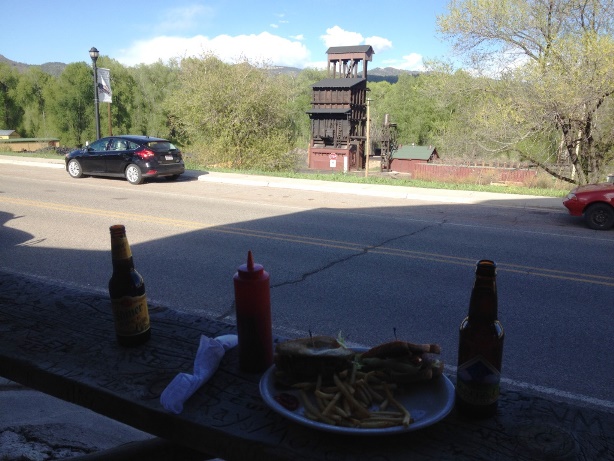

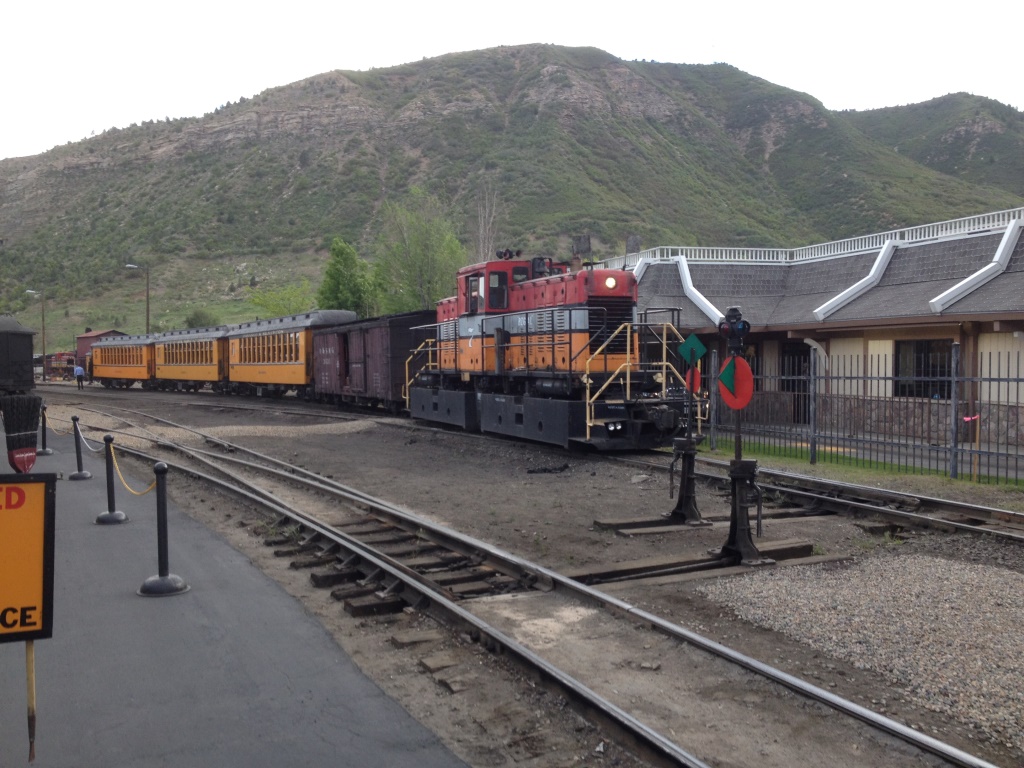
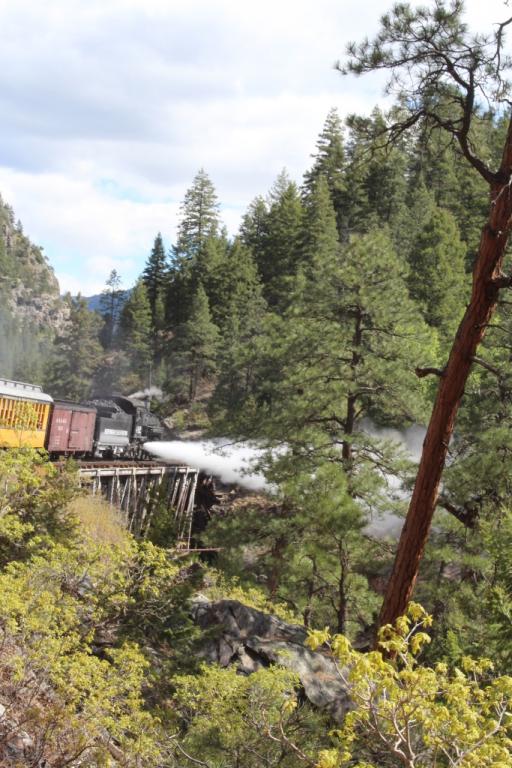
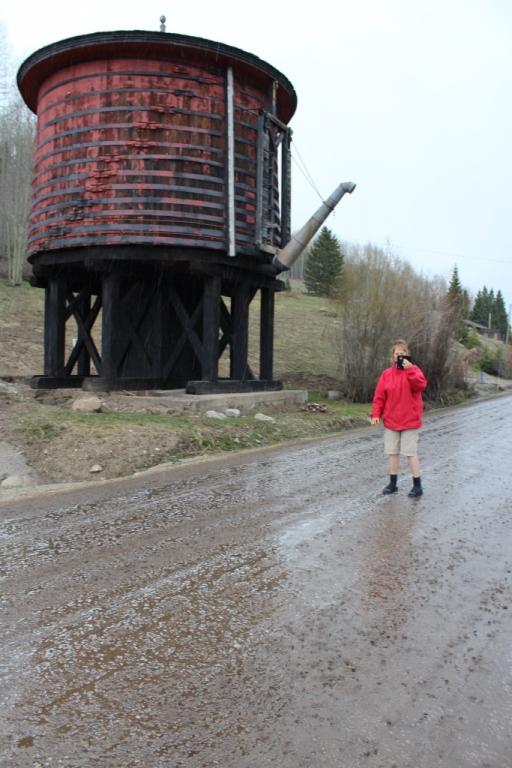
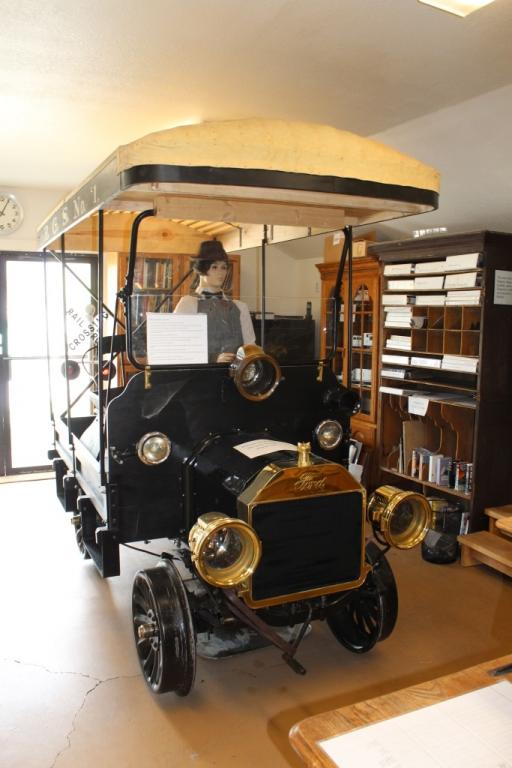

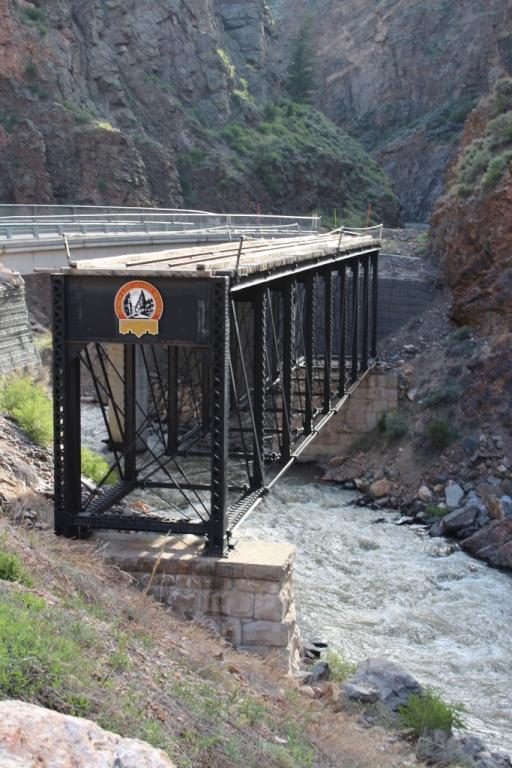
J M Design overlays for Dapol coaches
in Irish Models
Posted · Edited by Mayner
Kevin.
The 650 Class 2-4-0 & CIE 20T flat wagon are next in line for release before any further development work on the coach kits. The artwork is finalised for the loco and wagons and a pattern maker is preparing the masters for the castings.